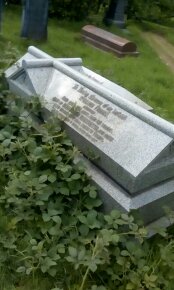William Frame
William Frame | |
|---|---|
 Grave of Frame, Cathays Cemetery | |
| Born | 1848 Melksham, Wiltshire |
| Died | 11 April 1906 (aged 58-59) |
| Nationality | English |
Notable work | |
William Frame was an English architect.[1]
Life and works[]
Frame was born at Melksham, Wiltshire in 1848.[2] Training as an architect, he was articled firstly to William Smith of Trowbridge,[1] he then became assistant to John Prichard of Llandaff.[1] In 1868, he entered the office of William Burges and worked with Burges at Cardiff Castle and Castell Coch.[1] Following Burges's death in 1881, Frame remained in the service of John Crichton-Stuart, 3rd Marquess of Bute and continued Burges's work at both castles, as well as designing the Grade I listed Pierhead Building in the docks built by Bute's father.[3]
Frame also continued to work on Bute's Scottish home, Mount Stuart House, on the Isle of Bute.[4] He undertook the building of the Animal Wall, in the grounds of Cardiff Castle, for which Burges had got no further than drawing the designs.[5] Burges's favourite sculptor, Thomas Nicholls, executed the carvings.[6] During these years he won the Royal Academy's gold medal and the Soane Medallion.[1] Later in his life, Frame also produced a small number of very well regarded grandfather clocks in the village of Larkhall, Scotland that were commissioned by some of the aristocratic class of his time.[7]
Frame's latter years were marred by alcoholism.[1] His drinking had been problematic for some time; in 1890, Bute noted in his diary, "Frame … drunk again … had to dismiss him".[8] He died in April 1906 and was buried on the 21st of that month in Cathays Cemetery in Cardiff.[9]

Pierhead Building, Cardiff Bay, Frame's masterpiece

Animal Wall

Castell Coch

St Edward's Church, Sanday
Footnotes[]
- ^ a b c d e f David Goold. "Dictionary of Scottish Architects - DSA Architect Biography Report (April 1, 2012, 1:09 pm)". Scottisharchitects.org.uk. Retrieved 1 April 2012.
- ^ The Pierhead Building, by William Frame, VictoriaWeb.org. Retrieved 26 january 2014.
- ^ Cadw. "Pierhead Building (Grade I) (14055)". National Historic Assets of Wales. Retrieved 20 March 2020.
- ^ Hannah 2012, p. 195.
- ^ Hannah 2012, p. 196.
- ^ Williams 2016, p. 4.
- ^ "CPHS Website". www.carlukehistory.co.uk.
- ^ Crook 2013, p. 276.
- ^ "The National Library of Wales". Retrieved 11 April 2021.
Sources[]
- Crook, J. Mordaunt (2013). William Burges and the High Victorian Dream. London, UK: Frances Lincoln. ISBN 978-0-7112-3349-2.
- Hannah, Rosemary (2012). The Grand Designer: Third Marquess of Bute. Birlinn. ISBN 9781780270272.
- Williams, Matthew (2016). The Animal Wall at Cardiff Castle. Cardiff, Wales: City of Cardiff Council. OCLC 1062307948.
- 1848 births
- 1906 deaths
- 19th-century English architects
- People from Melksham
- Architects from Wiltshire



